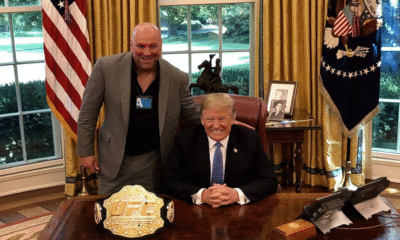Trump Presidency
Student Loan Collections Resume on May 5: What Borrowers Need to Know
The U.S. Department of Education has officially announced that it will resume collections on defaulted federal student loans starting May 5, marking the end of a five-year pause that began during the COVID-19 pandemic. The move is expected to impact millions of borrowers, with significant consequences for those who remain in default or delinquency. Student loan payments were paused in March 2020 under emergency COVID-19 relief measures introduced during the Trump administration and later extended by President Biden. In a recent op-ed, Education Secretary Linda McMahon criticised Biden-era policies as “dishonest and irresponsible,” placing blame on universities for profiting off student loans while delivering questionable value in return.
However, the current administration has confirmed there will be no further extensions. In a statement this week, the Department of Education warned that borrowers in default may soon be referred to debt collectors, with potential consequences including wage garnishment and negative impacts on their credit scores.
Borrowers will begin receiving notification emails over the next two weeks. Those in default will be encouraged to enrol in income-based repayment plans or seek relief options, but if they fail to act, they may face automatic paycheck deductions as early as this summer.
Who Is Most Affected?
The policy will affect all 42 million Americans holding federal student loans, but particularly the 5 million borrowers currently in default, as well as an additional 4 million in “late-stage delinquency”—those on the brink of default. For these 9 million individuals, May 5 marks a critical deadline. If no action is taken, their loans will be sent to the Treasury Offset Program, a federal debt collection service.
Experts warn this could significantly harm borrowers’ credit scores, potentially limiting their ability to secure housing, car loans, or even basic credit for everyday expenses.

Trump’s Education Secretary, Linda McMahon, wrestling WWE’s Kane
A Policy Shift and a Political Divide
This marks a major shift from the Joe Biden administration’s earlier efforts to ease student loan burdens through debt forgiveness and the now-frozen SAVE plan, which aimed to adjust payments based on income and household size. The Supreme Court struck down Biden’s broader forgiveness proposal, and a court freeze has since stalled the SAVE initiative.
Now, under the Trump administration’s leadership, Education Secretary Linda McMahon has taken a firm stance.
“We are not doing this to be unkind,” McMahon wrote. “Borrowing money and failing to pay it back isn’t a victimless offense. If borrowers don’t pay their debts, taxpayers do.”
She pledged greater accountability for both borrowers and educational institutions, citing research that showed colleges raised tuition by 60 cents for every additional federal loan dollar offered.
The Economic Fallout
The return of collections could place sudden strain on millions of household budgets. After years of not making payments, many borrowers may have grown accustomed to not having monthly obligations. Former Education Department official Colleen Campbell noted that entire cohorts of students have never made a single payment due to the extended pause.
Though most student loan debt is held by the federal government—limiting broader economic risk—the burden on individual borrowers could be severe, particularly as consumer prices remain high and wage growth slows.
As May 5 approaches, borrowers are urged to review their loan status, explore repayment options, and avoid default, as the consequences could extend far beyond missed payments, potentially impacting lives and livelihoods for years to come.










































